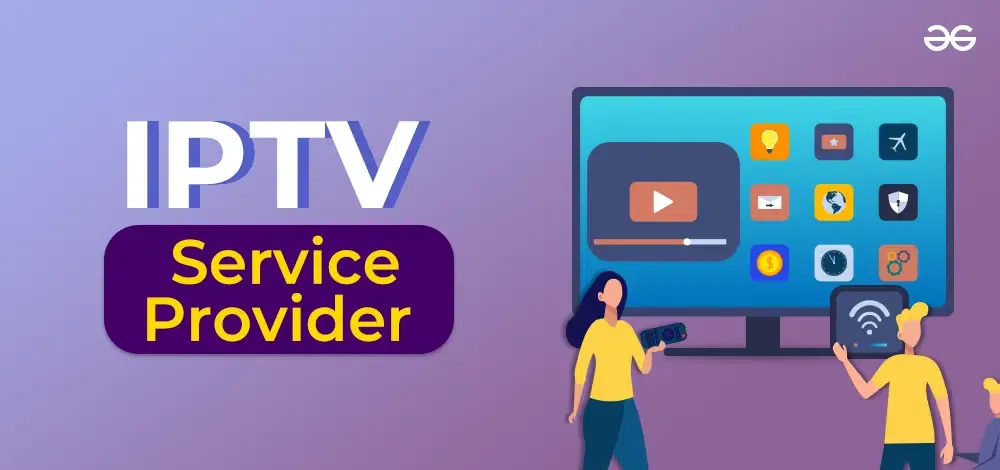Exactly How IPTV Functions: A Step-by-Step Overview to Internet Method Television Modern Technology
Internet Method Tv (IPTV) has actually transformed the method we consume tv web content, providing a brand-new world of possibilities via the power of the internet. From the essential concepts of IPTV to the intricate procedure of content distribution, each action plays an important role in making certain a smooth watching experience.
IPTV Essentials
In comprehending IPTV essentials, it is critical to realize the fundamental functions of this modern technology in delivering tv web content over the web. IPTV, which means Web Method Television, utilizes Web Protocol (IP) networks to send tv content to individuals' gadgets. Unlike typical approaches of broadcasting television material via cord or satellite signals, IPTV streams media with high-speed net connections.
Furthermore, IPTV enables for interactive abilities, such as video clip as needed (VOD) and electronic program guides (EPG), improving the customer experience by providing even more control and adaptability in accessing material. Overall, understanding the fundamentals of IPTV sets the structure for exploring its even more advanced performances and the benefits it uses to modern-day television intake.
Content Shipment Refine
Effective content distribution in IPTV systems involves a well-structured procedure that ensures seamless transmission of television content over IP networks. The web content delivery procedure in IPTV begins with the creation of the video web content, which is then encoded into digital style appropriate for IP transmission. This inscribed material is after that firmly stored on web servers referred to as media web servers. When an audience demands specific material, the IPTV system gets the requested data from the media servers and delivers it to the customer's tool online.

Middleware Capability
With the combination of middleware, IPTV systems gain boosted capability that improves user communication and material monitoring. Middleware offers as a critical component that links the gap between the interface and the back-end framework, facilitating smooth communication and interaction within the IPTV system. Among the crucial functions of middleware in IPTV is to allow tailored user experiences by offering attributes such as interactive program overviews, video-on-demand services, interactive advertising, and individual choices administration. By centralizing these capabilities through middleware, company can offer a much more vibrant and tailored IPTV experience to their customers.

Tool Compatibility
Offered the essential function of middleware in making it possible for seamless interaction and content administration in IPTV systems, a vital aspect to take into consideration is the compatibility of devices used for accessing the IPTV solutions. Device compatibility is vital for making certain a smooth user experience and ideal efficiency when accessing IPTV web content.
In the context of IPTV, device compatibility refers to the ability of a device to properly communicate with the IPTV service, show content correctly, and support the essential protocols and codecs for streaming video material over the net. Different gadgets, such as smart Televisions, set-top boxes, smart devices, tablet computers, and computers, might have varying degrees of compatibility with IPTV services.
To make certain a smooth viewing experience, it is very important for users to pick gadgets that work with the specific IPTV solution they are making use of. In addition, IPTV solution carriers must supply assistance for a large range of devices to deal with the diverse requirements of their individual base. By prioritizing tool compatibility, both users and solution providers can improve the overall IPTV experience.
Quality of Solution (QoS)
Considering the crucial role of keeping a high standard of efficiency and integrity in IPTV systems, ensuring consistent High quality of Service (QoS) stays a fundamental element of go to this website the customer experience. QoS in IPTV refers to the ability of the system to deliver web content with very little disruptions, high resolution, and quick loading times. To accomplish ideal QoS, different variables need to be addressed. Network data transfer is vital to support high-quality video clip streaming without buffering or pixelation. Furthermore, latency, jitter, and package loss need to be reduced to enhance the watching experience.
Company employ QoS mechanisms such as web traffic prioritization, buffering, and error modification to preserve a stable IPTV solution. By prioritizing IPTV traffic over much less time-sensitive information, companies can make certain smooth playback also during height use Recommended Site hours. Buffering assists compensate for network fluctuations, while mistake modification methods enhance data honesty.
Continual monitoring and optimization of QoS criteria are important to adapt to altering network problems and individual demands. Ultimately, a durable QoS framework is important for providing a smooth and pleasurable IPTV experience to users.
Final Thought
To conclude, IPTV runs with the transmission of tv site here material over internet method networks. The technology entails a methodical procedure of web content distribution, assisted in by middleware performance to ensure compatibility throughout various devices. Top quality of Service plays an important duty in keeping the efficiency and reliability of IPTV solutions. Understanding the basic principles of IPTV is crucial for realizing the details of this ingenious television modern technology.